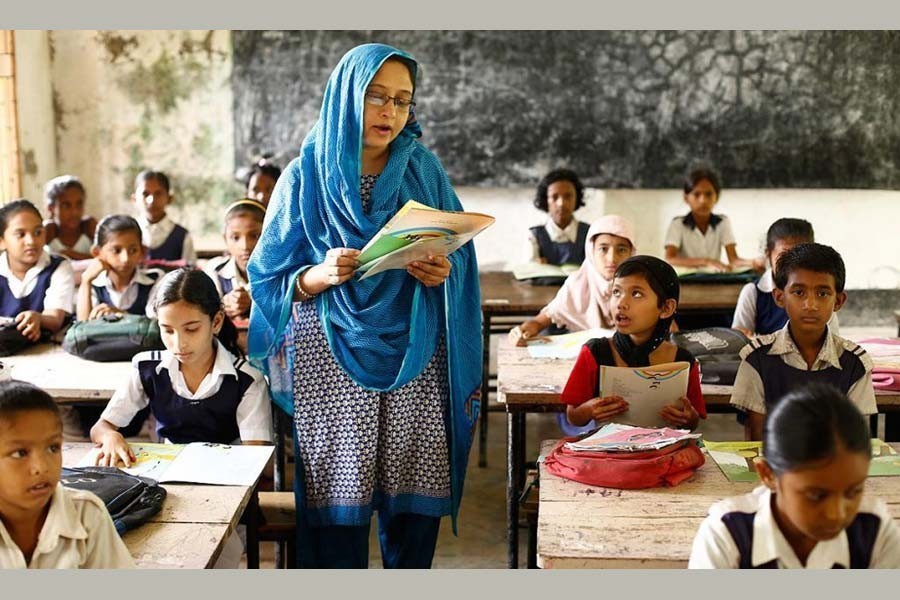With pictures of little angelic faces -- mostly of girls and all smiles -- splashing the front pages of newspapers on the first day of the year 2020, the nation could not think of a more propitious beginning of the New Year. Those beaming faces were of the top grade -- most likely golden GPA-5 -- achievers in the last Primary Education Completion (PEC) and Junior School Certificate (JSC) or Junior Dakhil Certificate examinations.
No, the girls' pictures were not carried in from any consideration for gender bias, they simply deserved it. In the JSC and JCD examinations girls have outshined boys in both pass rate and in the achievement of grade point average (GPA) -5. Of the girl examinees, 88.64 per cent came out successful as against 87.03 per cent for the boys. But the greatest gain the girls made is in scoring the top grade: against 32,546 boys making it to the top grade, 45,883 girls -- 13,337 more than boys -- achieved the distinction.
Unlike the improved results of the JSC and JCD examinations compared to the previous year, the PECE and Ebtedayee examinations recorded a considerable drop in pass rate as well as in the number of GPA-5 achievers. Although boys at this level have a slightly higher percentage of pass at 95.61 than girls at 95.37, the latter beat the former by a wide margin in GPA-5 performance. Against 184,637 girls who obtain GPA-5, the number of boys is 141,451. Notably, 205,701 more girl examinees than boys appeared for the PEC exam.
It is only natural that examinees who have obtained the highest grade are jubilant so are their parents and near and dear ones. It is a moment for celebration of the success. Happiness as expressed by them is contagious. Even the readers of newspapers who saw the happy faces in newspapers and on electronic media felt happy for them. What, however, goes missing is the sorrows and despondency of those who failed in the examinations. The percentages of failure in the PEC and JSC examinations are about five per cent and more than 12 per cent respectively. If the current trend of GPA-5 hype is considered, any result below the top grade is considered a gross underachievement.
Viewed from that angle, the success surely pales before failure and lower grades. If the hype and enthusiasm generated -- courtesy of the promotion of the two to the level of public examinations -- are taken into consideration, how the entire show impacts child psychology is anybody's guess. Voices at the top policymaking level are sounded from time to time against putting unnecessary pressure on children but nothing is done to bring an end to this unhealthy competition. It is unhealthy because commercialised coaching, guide and notebooks and even proxy appearance at examinations have vitiated the environment of education at this level. No wonder, the High Court, taking cognizance of the anachronism, has issued show cause notices why expulsion of PEC examinees from examination halls would not be declared illegal and why fresh examinations not arranged for the expelled candidates.
The psychological impact is likely to be devastating for children of so tender an age when they are expelled. Even when they cannot live up to the expectation of their parents in their performance at examinations and are compared with their successful peers, the inferiority complex they develop can literally consume themselves. The fertile idea of holding two public examinations for children could not produce anything extraordinary in terms of quality education. Had it been the case, youth unemployment -- and that too for bachelor and master degree holders -- would not be so high. More than one-third of such educated youths are now unemployed in this country.
When educationists have long been demanding elimination of such public examinations, the bureaucratic behemoth is now all set to constitute an examination board for holding PECE after the model of the boards for the Secondary School Certificate examinations and Higher Secondary Certificate examinations. This shows that the ministries concerned have no intention of doing away with the public examinations for children.
The education minister has realised the danger of the insane emphasis put on GPA-5. How the craze for GPA-5 could be pacified is yet to be known. But for sometime now policymakers have been airing the view that the results would be systematised like CGPA (cumulative grade point average) as introduced in higher education. But how this can be done where examinees sit for all papers' final examinations once a year is mind-boggling. At the university level, students sit for weekly tests and term papers and from those the best scores out of several (usually at least three) are taken into account. Also there are practical classes, the marks of which are added to the score.
These are outlandish suggestions when children aged between 10 and 14 are concerned. Of course, they can be evaluated by their school teachers if the system of education is changed lock-stock-and-barrel. This calls for reposing confidence in teachers who can deliver the goods. The first criterion is to invest in them so that they can do so. If teachers are qualified enough and are not needed to get involved in coaching outside class, they can educate learners up to the desired level. Then public examinations will become redundant.


